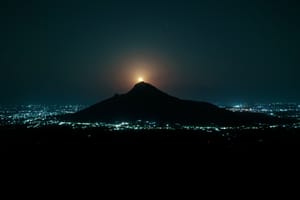To elevate the spirit
Pradakshina is said to bless the pilgrim, to bring peace to one’s mental and physical health. Pradakshina at the full moon is said to amplify these blessings so every full moon, day and night, Girivalam — giri-mountain; valam-around — Road is shoulder-to-shoulder pilgrims, most barefoot, walking the 14 kilometers around Arunachala, the big hill that’s said to embody Shiva, the great destroyer.
Each syllable of Pradakshina has a meaning: Pra dispels sin, Da fulfills desires, Kshi destroys karma, and Na bestows salvation.
Hindus also walk around the sanctum in temples or their home puja rooms in a clockwise direction reminding them that God is the center of existence, the center of the walk. Actions and thoughts are always centered around God.
Pradakshina should be done slowly, never in a hurry.
Tiruvannamalai calls pilgrims from around the world. They come for the Hindu Arunachalesvara Temple, Ramana of the Advaita tradition, and Arunachala.
Usually, pilgrims travel with friends or family, praying or talking as they walk. Some walk alone.
During a full moon, there’s a carnival atmosphere because the crowds attract vendors who set up fry pots and sell batter-dipped plantain, or seasoned savory donuts called vada, flavored rice, and other food, chai, soft drinks and trinkets on wide flagstone sidewalks on the west side of the mountain.
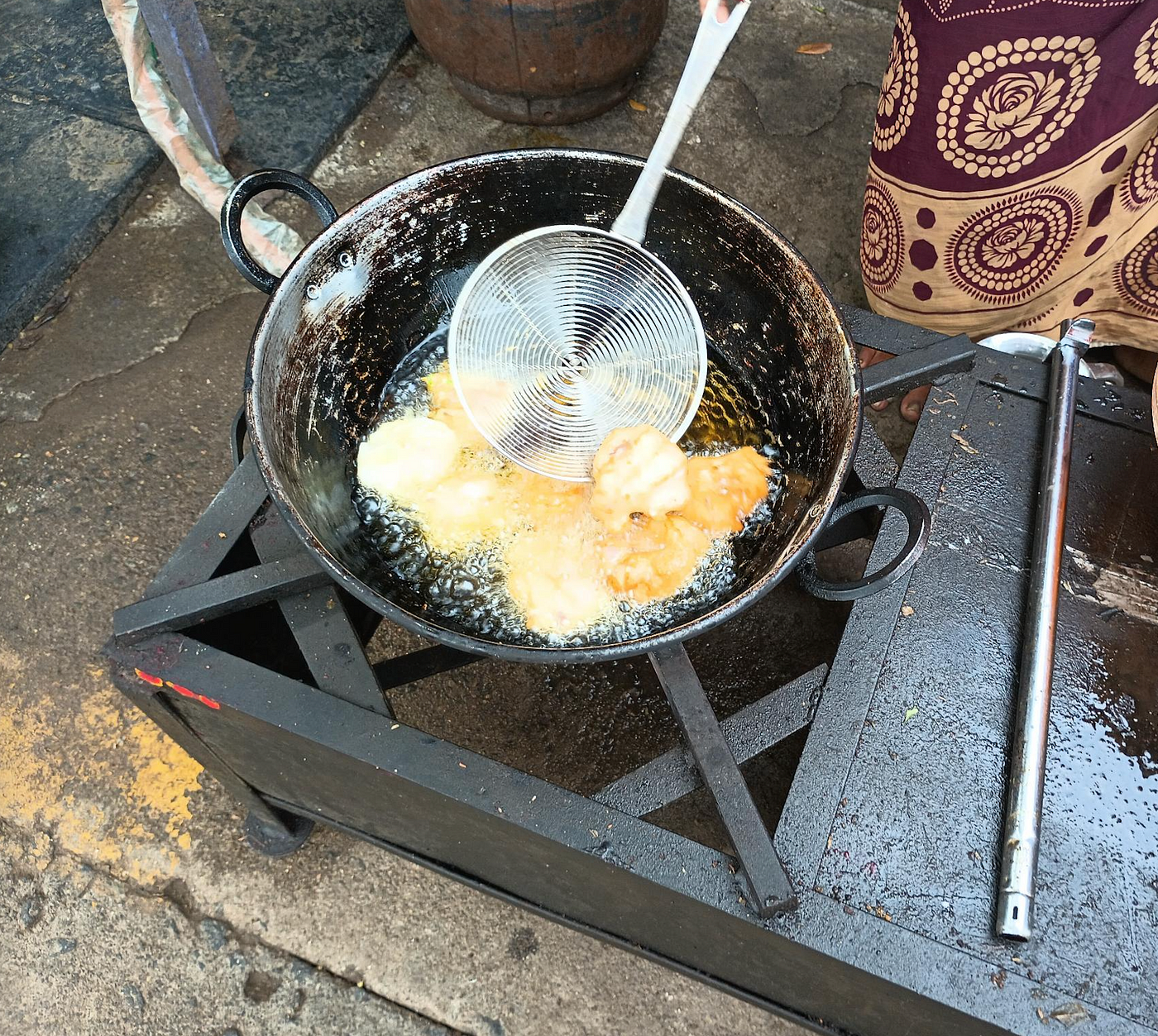
Some months, and on holidays like Deepavali and Deepam, there can be hundreds of thousands of pilgrims doing pradakshina.
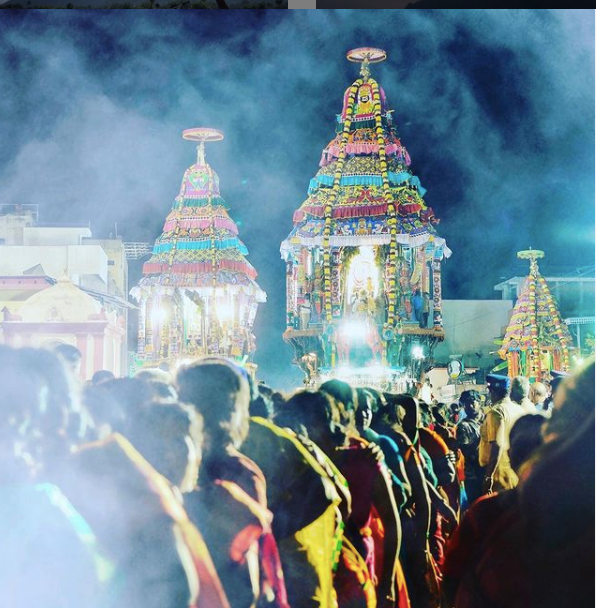
I prefer to do it when there aren’t so many people.
I set out before 5 am because I’m up anyway and it’s cooler than it will be when the sun appears. Two blocks to Girivalam from where I’m staying, and a left turn at the Nithyananda Ashram.

The three-plus-hour walk begins. Even though it’s not full moon, it’s the weekend and I still have plenty of company.
I start out with the best of intentions, plus deep breathing and mantras. Om Namah Shivaya, surrender to Shiva, is the main mantra in these parts. Along this area of Girivalam Road, loudspeakers repeat the mantra in a tinny bass monotone: Om Namah Shivaya. Om Namah Shivaya. Om Namah Shivaya.
Sadhus, mostly men but a few women too, who wear orange — renunciates — who live along Girivalam, use it as a greeting. Most people here use it as a greeting.
The discipline is to repeat the mantra 108 times, because 108 added together makes nine and nine is kind of a magic number here: the number of completion. Beads of a mala, a necklace, total 108 to keep track of mantra repetitions.
Temples, temples everywhere. They’re not all big with colorfully painted statuary on top; some are smaller and simple: A statue of a god facing out and ghee lamps burning inside an adobe shelter.
Outside some of the larger temples are tables with ghee lamps you can purchase and light, to leave burning while you go on with pradakshina. The light carries your prayers, your intentions.
Along the way, some people stop at the larger temples, where a priest performs arthi. Upon a brass plate, a burning ghee lamp and a brass vessel containing kumkum, which is ground turmeric mixed with lemon juice. The acidic juice turns the turmeric crimson.
For a few rupees offering, the priest blesses the murthi — statue — by slowly bringing the light up and around it in a circular motion. He then turns his attention back to those who’ve made the offering and presses kumkum between their eyebrows.
Hindus wear kumkum in this spot because it is a major nerve point, the seat of the Ajna chakra, the center of intuition. Kumkum is said to enhance intuition.
If you were walking Pradakshina during a full moon, the route would be closed to traffic.
But since it’s not full moon and I’m about an hour out, I’m approaching the north side of the mountain and it’s almost day break. It’s still pretty quiet; the town doesn’t really wake up, the traffic doesn’t start in earnest until sunup, around 6 am.
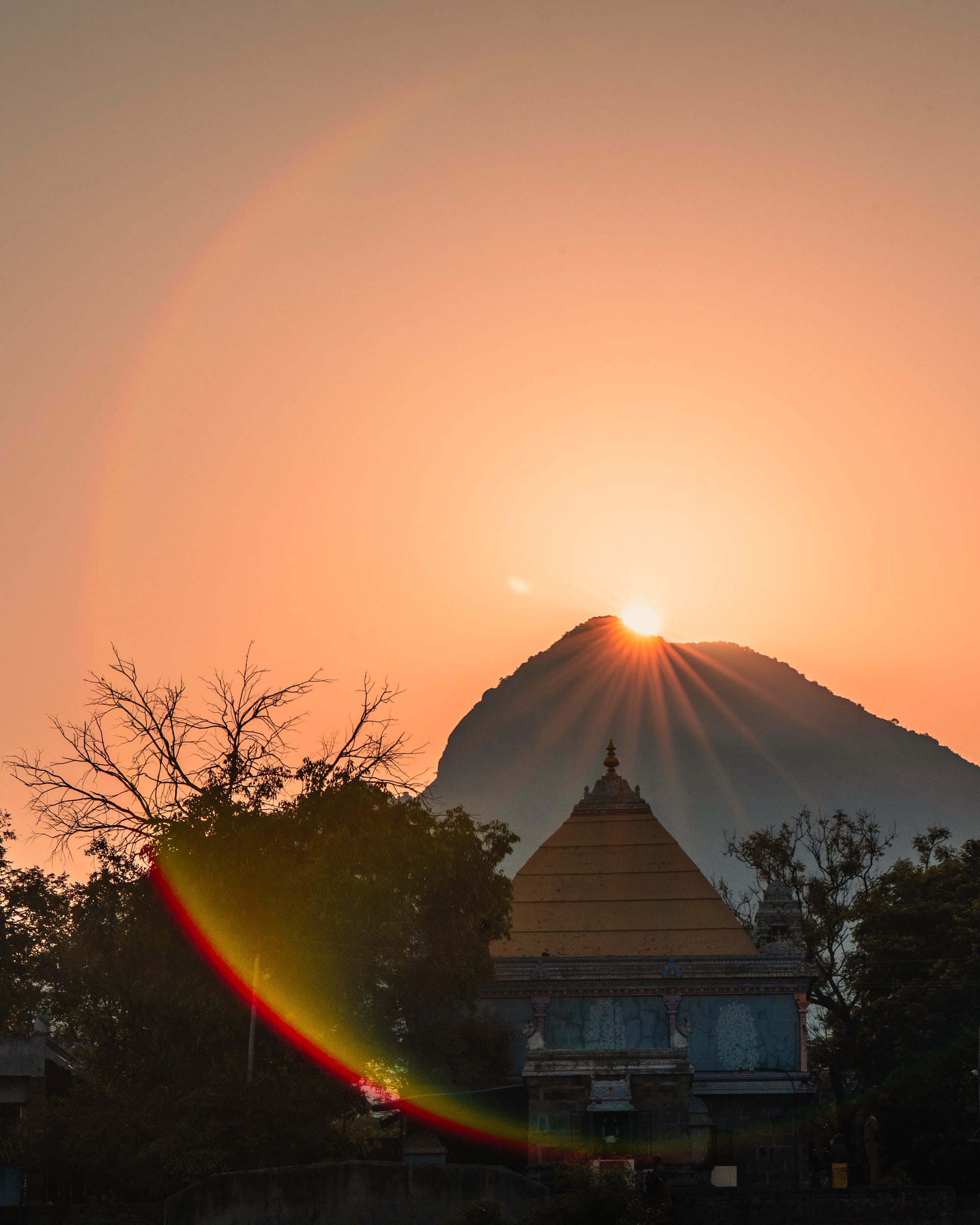
Then, look out. It’s breathtaking how fast some of those buses jet down Girivalam. Lorries too. And cars. Always a good idea to pay attention.
Morning sun. It is going to warm up in a hurry. I’m glad I started early. There’s shade ahead but here, there is none.
Om Namah Shivaya. Om Namah Shivaya. Om Namah Shivaya. My mind wanders and I have to bring my attention back to this walking meditation — something I’ve never been good at.
I practice wide-angle vision, focusing on a point far ahead, activating the peripheral vision. It’s a good way to all at once walk and pray and be aware of yourself and everyone else and everything else and every sound within and without your visual panorama.
Seventeen seconds. When I can actually hold wide-angle vision for a full, uninterrupted 17 seconds, I know I’m making progress.
Huts, private residences, abut the sidewalk in spots along Girivalam, and clotheslines strung at face level. I dodge the pants, shirts, underwear and saris flapping in the morning breeze.
About two hours in, I cut through a nagar, or neighborhood. Someone told me about it — to get away from traffic. I’m not sure which side road to take so I take a risk and follow a muddy trail. It puts me into a stand of tall trees that provide a canopy, then down a hill. I think this is it. I keep going.
Really, how lost could I get? Not too. I could always follow the noise to the main road below and be back on track.
Through the grimy neighborhoods, I feel a little uncomfortable. I don’t think Westerners find their way through these parts all that often. But no one is unfriendly; men and women go about their business. Children stare. Sometimes they approach asking for chocolate or pencils or coins.
The lanes are narrow and the mostly two-story houses are attached to each other, front doors directly on the street. Given a choice, left or right, I take the alley or avenue to the right. Avoiding puddles. Avoiding mud. It’s messy. And slippery.
Fwap, fwap, fwap. What is that sound? I take a few more steps and behind a colorfully painted open gate: a couple rows of mostly empty concrete stations, waist high. There’s a water source at each station and an indentation to step into. In the back, a woman slaps her laundry against the polished concrete.

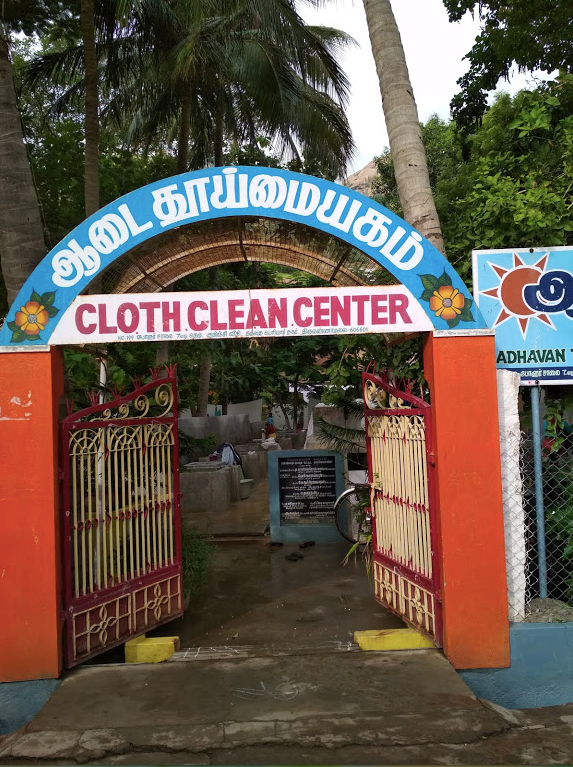
Author's photos
It’s the Indian version of a laundromat: The Cloth Clean Center.
I take a few photos, not lingering too long, contemplating the challenge of village women’s lives. God bless them.
After 20 minutes or so, I’m at the other edge of town. I continue and soon I’m walking past the 1300-year-old temple complex. This is Shiva territory and the Arunachaleswara temple is, of course, dedicated to Shiva. The 25-acre complex faces east and has four gateway towers, one in each direction. The eastern tower is one of the tallest in India at 66 meters.


The temple grounds had fallen into disuse and disrepair until renovations were made, prompted in part by Maharshi Ramana’s, move to Tiruvannamalai, and the devotees he attracted, back in the 1920s.
At age 16, Ramana traveled to this temple from his home in Madurai, to meditate. There is a stairway to the underground vault in the thousand-pillared hall where Brahmana Swami, as the enlightened Ramana was first known, spent two months in samadhi, eaten by mosquitoes and vermin, lost in a trance.
His uncle came to retrieve him but Ramana refused to go. He remained in Tiruvannamalai until his death in 1950. He is buried at the temple at the Ramana Ashram along the pradakshina path.
Onward. I continue my walk through town, keeping to the dirt shoulder. As always, town is a flurry of activity: motorbikes and scooters speed by, as do buses and the Indian version of a lorrie — very folk-arty — Ashok-Leland trucks right out of the 1950s, both in style and bright colors.
Past the Ramana Ashram on the right.
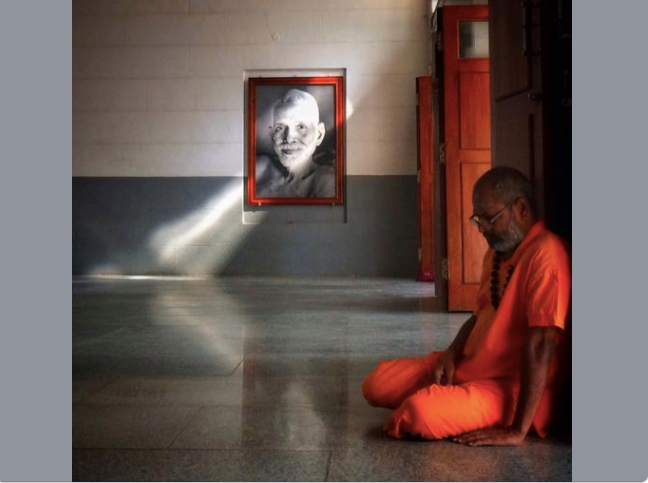
Within an hour, I’m back to my starting point: Nithyananda Ashram.
Om Namah Shivaya. Om Namah Shivaya. Om Namah Shivaya.
I thank Arunachala for the blessings: a healthy body, being here in this holy place, the peace and satisfaction that come with making pradakshina. And I thank Arunachala for the blessings I’m not yet aware of but know are with me always.
I check my watch. A little over three hours.
It’s a just after 8 am and I still have the whole day ahead of me.
Thanks for reading!

